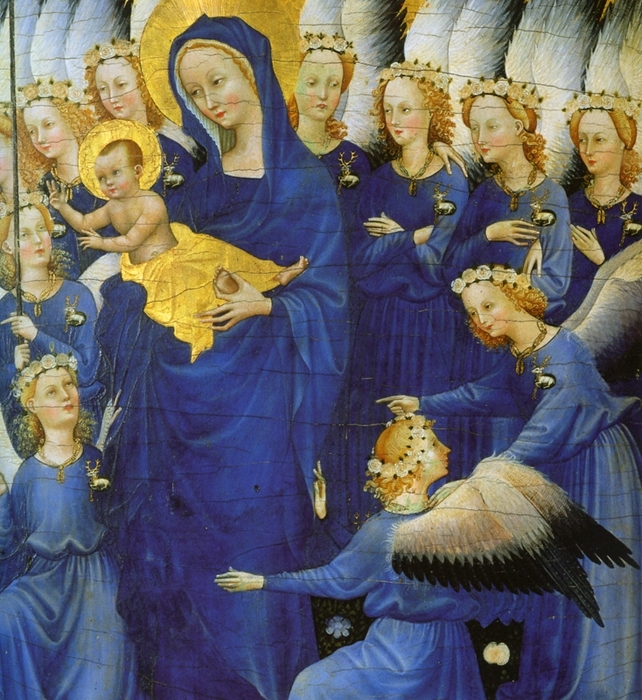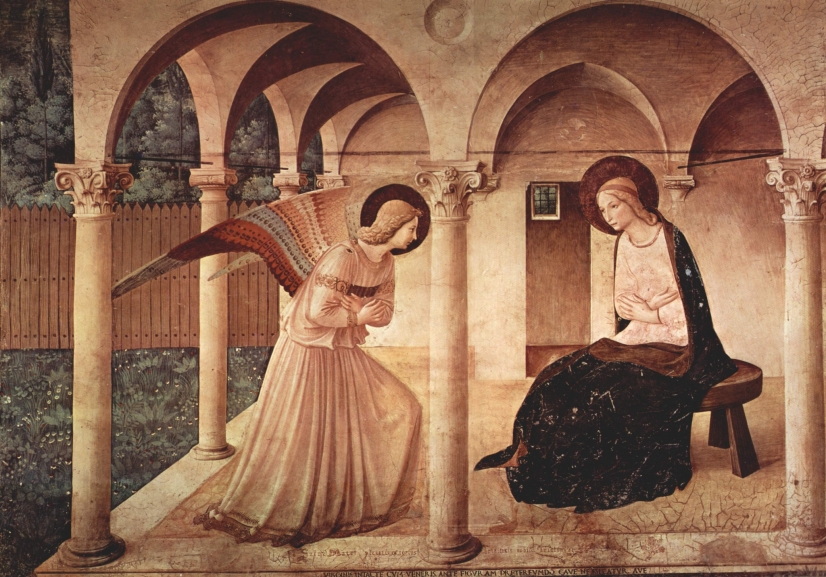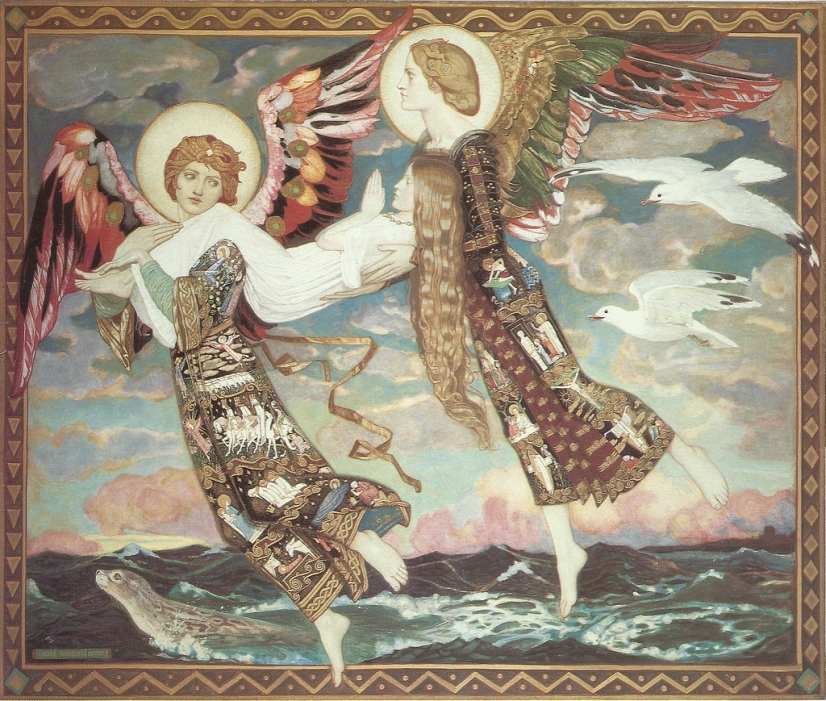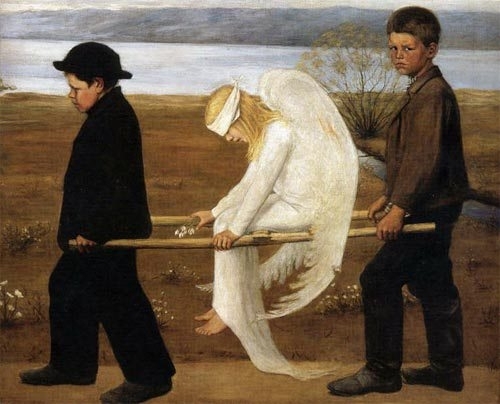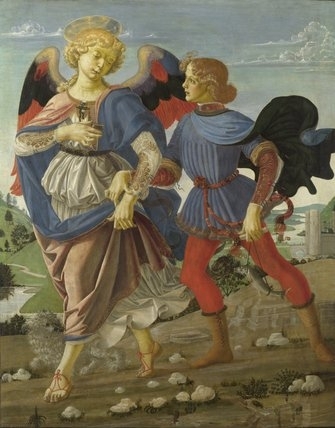Part of the Wilton Diptych, an art work commissioned by Richard II of England, and in which he is depicted as kneeling before the infant Christ.
The detail shows angels in a vareiry of poses, all clad in a rich blue, and badged with a white hind/deer, the insignia of Richard II. All the nagels are fair-haired - whether blonde or auburn, Saxons or Celts, is debateable - reflecting the context in which it was painted. All the angels are female and are wearing necklaces, they are crowned with white flowers. It's the facial expressions and the arms/hands that intrigue me.
Behind Mary, stands an angel with arms folded and a face that suggests mild irritation; next to her on the left a very tall, slightly haughty looking angel, whilst to her right stands one with a look of mischief on her face. I find myself wondering what they are thinking, what whispered conversations they might be sharing, and how they are feeling.
I like the idea that, outwardly uniform and regimented, these angels are individuals with unique personalities. I like that very human emotions are expressed.
I wonder which angel you are drawn to in the image? I wonder why that is?
Thank you, God, that we are all different,
That we may react differently to any given set of circumstances
And yet are still part of your 'big picture', your story.
As we stand with angels, watching Mary with her son,
Draw us into the hope, love and joy of that moment. Amen.
